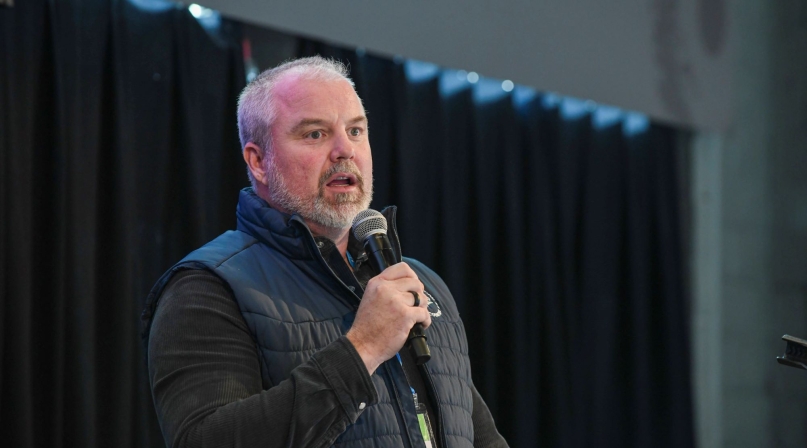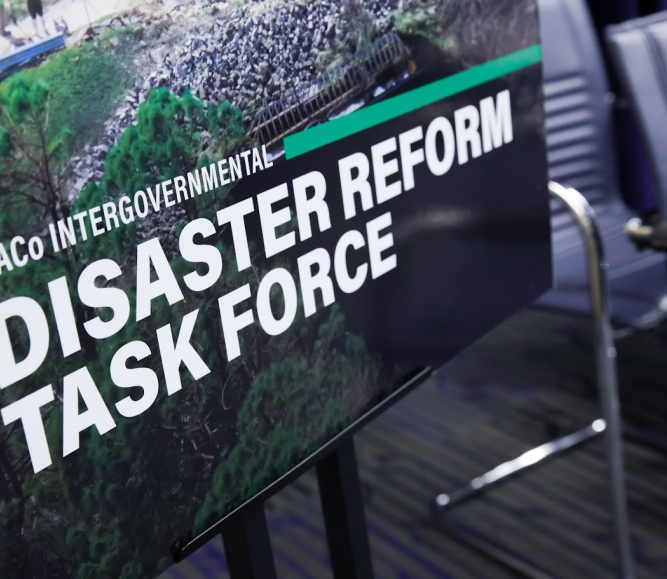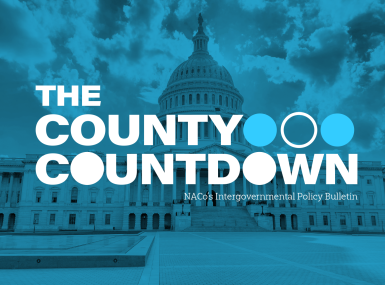As Washington zeroes in on disasters, counties must stay at the table
Author

Hon. James Gore
Upcoming Events
Related News

Key Takeaways
Disasters don’t check calendars. They don’t wait for elections, budget cycles or bureaucratic green lights. And they certainly don’t pause when a task force’s term is set to expire.
That’s why, as president of NACo, I’ve decided to extend the work of our Intergovernmental Disaster Reform Task Force. When we launched this group, it wasn’t just a ceremonial initiative — it was a response to a reality that county officials like you and I know all too well: We are on the frontlines of every disaster.
The task force was born out of hard experience. In my own county, we’ve faced nine presidentially declared disasters in the past seven years. That means nine times we’ve had to mobilize local resources, navigate red tape and fight for the attention of our state and federal partners. Some of those battles were won. Others revealed just how much more work we have to do.
What’s become clear to me — and to many of you — is that the current system isn’t built to keep pace with what’s coming. The federal government is starting to recognize this. From FEMA to Congress, there’s a growing appetite for reform. That’s good news. But let’s be clear: Reform without local input isn’t reform, it’s a missed opportunity.
That’s where counties come in. Our voices, our stories, our solutions — they belong at the center of this conversation. And this task force is how we make that happen.
Extending the task force means continuing the momentum we’ve built. It means taking the lessons we’ve learned on the ground and turning them into federal policy that works for all counties – big and small, coastal and inland, urban and rural. It means pushing for smarter, faster, more balanced disaster systems that reach the people and places that need them most.
So, to every county official reading this: Thank you. Thank you for showing up in times of crisis. Thank you for sharing your experiences with us. And thank you for standing together to shape a better system — not just for our own communities, but for counties across the nation.
We’re not done yet. Let’s keep going.
County News
NACo disaster task force extends work into fall
NACo's Intergovernmental Disaster Reform Task Force will continue its work into the fall, following key developments including the release of the FEMA Act discussion draft and heightened engagement with the FEMA Review Council.

Related News

States file lawsuit challenging FEMA’s new rules on emergency management grants
On November 4, a coalition of 12 states filed a lawsuit against the U.S. Department of Homeland Security (DHS) and the Federal Emergency Management Agency (FEMA), alleging that recent changes to key emergency management grants are unlawful and could disrupt state and local preparedness efforts.

County Countdown – Nov. 4, 2025
Every other week, NACo's County Countdown reviews top federal policy advocacy items with an eye towards counties and the intergovernmental partnership.
FEMA bill staffers offer insights into reform effort
NACo Intergovernmental Disaster Reform Task Force heard from staffers who helped shape a bill that would make dramatic changes to the Federal Emergency Management Agency.